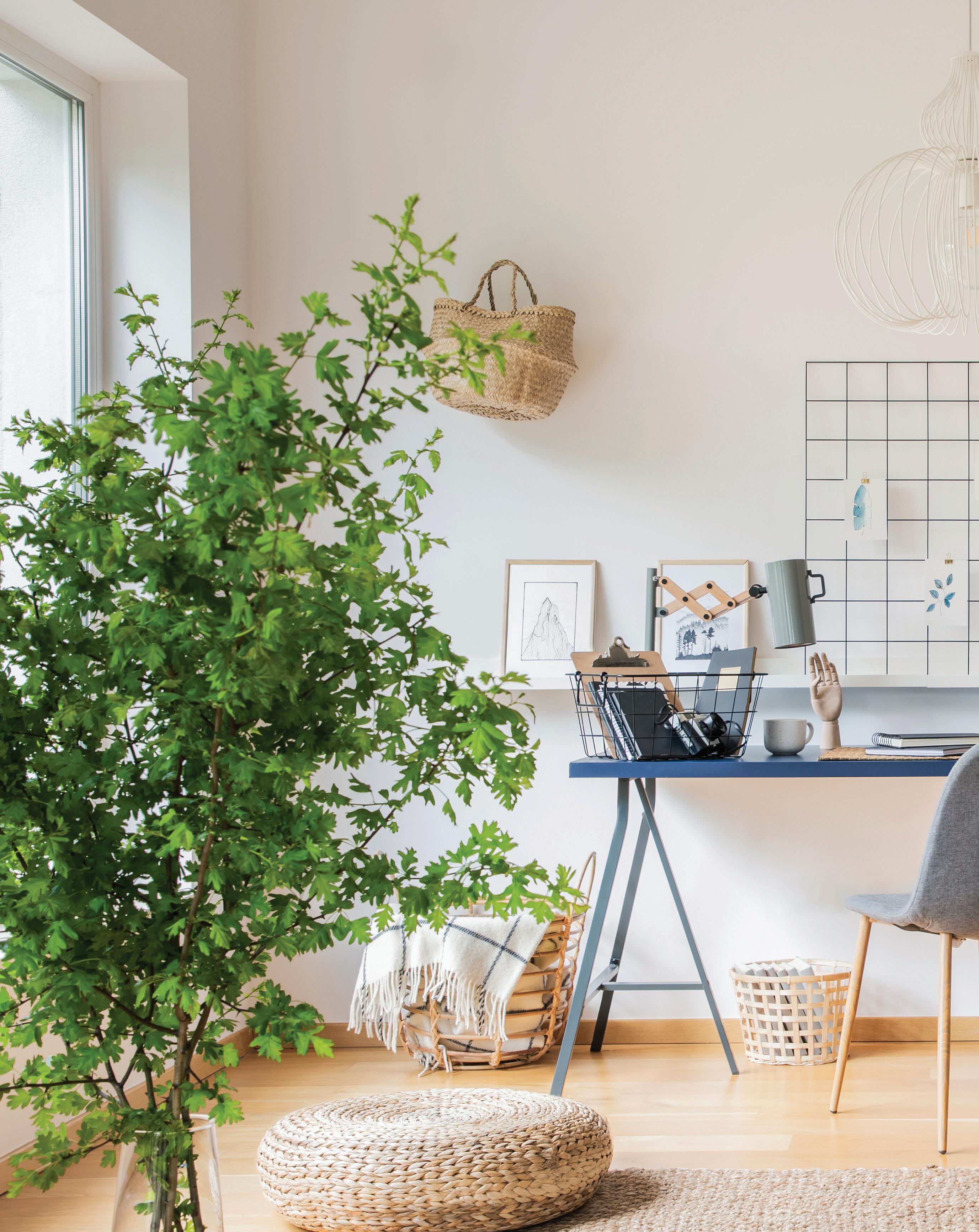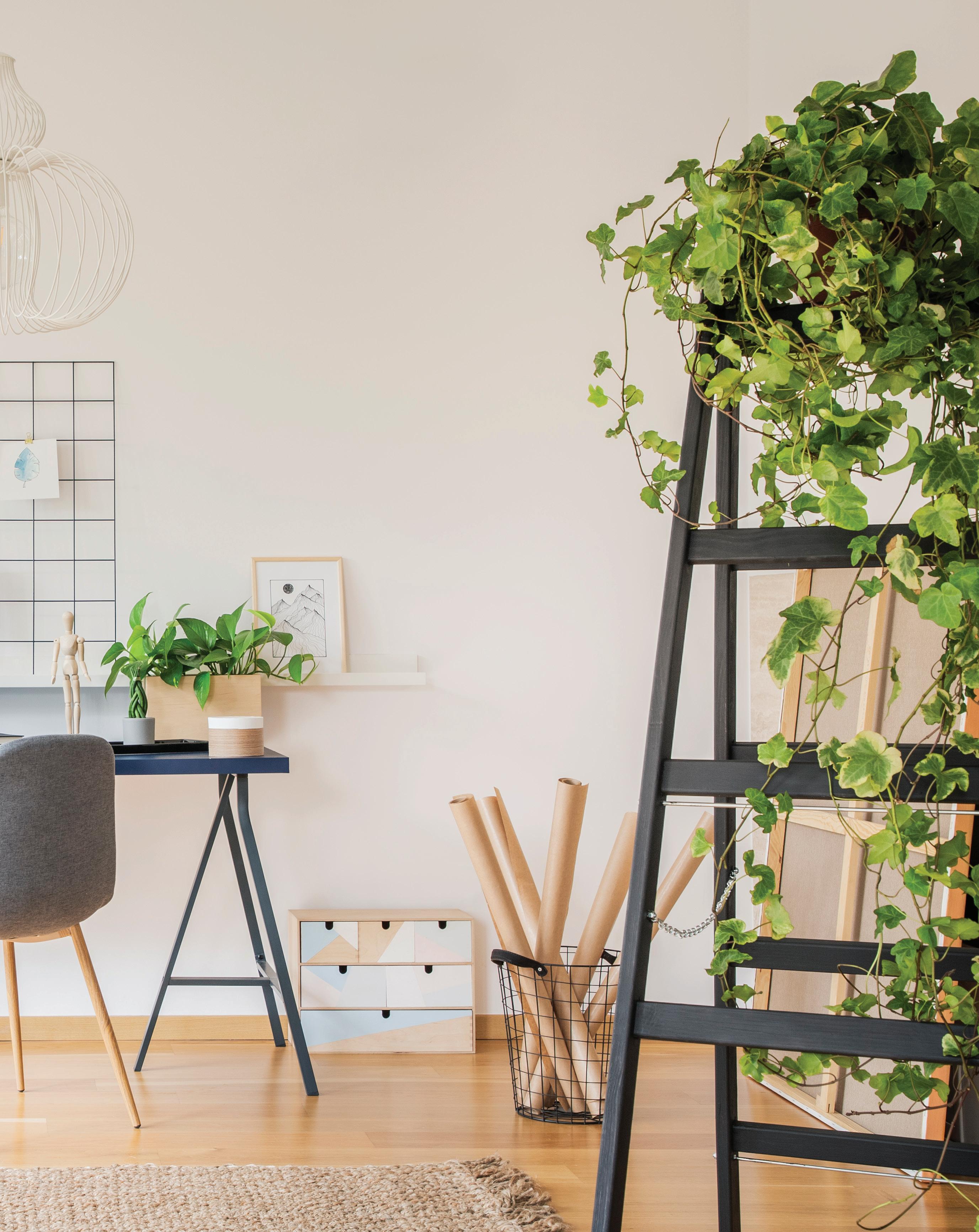
8 minute read
Working from anywhere: the role of access consulting
from Access Insight - Summer 2021
by ACAA
by Mary Ann Jackson and Saumya Kaushik
Mary Ann Jackson is a registered Architect, Planner, and Accredited Access Consultant. Mary Ann is currently undertaking a PhD focused on built environment accessibility at neighbourhood scale and is Director of Visionary Design Development Pty Ltd.
Saumya Kaushik is a registered Architect and Project Services Manager of Visionary Design Development Pty Ltd.
Worldwide, COVID-19 has materialised a ‘new normal’. This short ‘thought piece’ invites discussion on the role of access consulting/consultants in the increasingly normal scenario of (government/ professional services) office workers, facilitated by communication technology, working from anywhere, where ‘anywhere’ is, frequently, one’s home and/or the nearest cafe and/or other neighbourhood location.
Government-issued work-from-home (WFH) directives have seen office blocks emptied of workers, instigating increased use of digital work/ communication platforms accessed from ‘unintentional’ workspaces. In Australia, while restrictions have eased in early 2021, ongoing concern about the epidemiological safety of public transport has resulted in reduced patronage and increasing private vehicle use, likely counteracting climate change mitigation. In Victoria, almost everywhere one looks, much is being posited about Melbourne’s post-pandemic ‘new normal’. A focus on active travel (cycling, walking etc) and street level reactivation are common themes. And, indeed, at first impression, Melbourne’s ‘new normal’ within the public realm pedestrian environment, particularly in the CBD and inner urban areas, appears to be the proliferation of parklets for increasing outdoor dining space, more street art, and heightening attention to bike lanes. Although much is being put forward there is not necessarily consensus on priorities. Prioritisation is indeed difficult given the potentially competing tensions of the perceived economic imperative of getting the city running again as quickly as possible, dwindling government assistance to small and medium sized businesses, and the ramifications of the Victorian Government infrastructure blitz.
Built environment design and detailing has entered societal consciousness for several reasons. In the housing arena workers’ own experiences of WFH, the latter often combined with childrens’ remote learning, illuminated the pros and cons of existing housing design, including that of apartments. The locking down of Melbourne’s public housing towers highlighted significant infrastructural/ design shortcomings. On the other hand, the temporary housing of people experiencing homelessness and Victorian government social housing announcements illustrated that compressed timeframes are possible when there is political will. Also, positively, WFH requirements and more particularly the 5km radius restrictions prompted deeper engagement with the neighbourhood, including awareness of the increased pedestrian space required for achieving physical distancing and the viability, or otherwise, of shared spaces to facilitate same and accommodate childrens’ bicycling needs.
In the quest of preventing disease spread, improving hygiene in office buildings and offices therein has required attention to be paid to air-conditioning systems, lift capacities, high touch areas such as reception areas and door handles, desk spacing and design (eg, proliferation of sneeze guards/upstands), meeting room layouts, hand sanitiser stations, bathroom usage, and arguably most importantly, communication methods. Hybrid work situations prompted by the apparent success of WFH, government-imposed staggering of return to work, and workers not attending when sick, are also leading to re-thinks in office design. If, for example, only 50% of the office workforce are on-site at any one time, and they are predominantly on-site to engage in professional-social interaction, how much and what type of space is actually necessary?

In this projected new normal it is necessary to think about the location, form, content, and detail of the office environment at several scales. At the macro scale, lockdown, with its WFH instructions for office employees, generated on-going discussions about CBD revitalisation. On other hand during lockdown many suburbs experienced more vibrancy, particularly inner-city areas where ’20 minute neighbourhoods’ are already extant. Due to housing affordability challenges, however, many office workers live in outer ring suburbs dominated by housing estates. At the meso scale, eg, the office (building) envelope’s interface with the public realm and overall form/ content, building regulations routinely impose various requirements, including accessibility provisions for people with disability. Detail considerations revolve around the actual workspace, including ergonomic, privacy, and technological requirements. Weighing up this micro scale, many employees are willing to return to ‘the office’ as soon as possible, their current living arrangements not facilitating working from home on an ongoing basis.
In the Australian legislative system, as most readers would know, (government/ professional services/ commercial) office buildings are classified as Class 5 under the Disability (Access to Premises – Buildings) Standards 2010 (Premises Standards) and the Building Code of Australia (BCA) with concomitant ‘access for people with a disability’ requirements. However, the cautious return to (large) offices is resulting in significant levels of WFH continuing. For many reasons (professional development/social interaction for example) full-time WFH is often unsatisfactory. Melbourne’s 5km radius travel restriction enabled many office workers working from home to discover more about the local neighbourhood; many are desirous of continuing this new-found neighbourhood connection. But, if the office workplace is within the home, or somewhere else in the neighbourhood, who decides whether it is suitably accessible for whom and in accordance with what standard?
Also, in this supposed new normal, the voice of people with disability has been overlooked, particularly in regard to the built environment’s agency status in equitably supporting people with disabilities’ work-life (Martel et al., 2021). Worldwide, including in Australia, people with disability struggle daily with accessing the public realm pedestrian environment, public transport built infrastructure, and housing. Lack of enforcement and/or misinterpretation of built environment accessibility legislation has also been identified as a major impediment (Jackson, 2018). Leading contemporary urban/disability scholar-activist, Victor Santiago Pineda (2020), has written extensively of the shortcomings of the urban environment including the ways in which conventional design and delivery contributes to spatial and social injustice. Australia’s Disability Discrimination Act 1992 (DDA) legislates non-discrimination in employment. Built environment accessibility is a precondition to (social) inclusion (Pineda et al., 2017). Built environment inaccessibility at neighbourhood scale is therefore problematic if working from anywhere, in the neighbourhood, is the new office.
Sharam et al., (2018) found that there is still a lack of quantifiable data regarding accessible housing in Australia as had Bridge, (2005) more than a decade ago. Sharam et al., (2018) also stated that “[t]he Australian private sector housing, like much of the Western world, has, in the absence of universal accessibility standards, failed to provide appropriate housing for people with physical disability” (p. 31). Aitken et al., (2019) concluded that people with disability reported poorer housing quality and significantly more dissatisfaction with their neighbourhoods and homes than people without disability. However, currently no Australian scheme routinely funds modifying a dwelling for work purposes; modifications are restricted to those supporting ‘activities of daily living’, particularly within the NDIS. Current regulations in Australia exclude private dwellings from ‘access to premises’ regulations that apply to conventional locations of office work such as public and commercial (office) buildings. Although the Australian Building Codes Board (ABCB) is currently investigating mandating (some degree of) accessibility in all new private dwellings from 2022, it is certainly not guaranteed that will eventuate, any new legislation will not retrospectively apply to existing housing, and the DDA as it currently stands does not require housing to be accessible.

In a new normal of mobility to, between, and in, coworking (office) hubs, community buildings (eg, libraries), cafes, and houses as places of work, reliance on complying with current accessibility requirements for buildings alone is insufficient. While the Premises Standard and the BCA requirements for Class 5 are immediately applicable for determining accessibility to and within all areas normally used by the occupants in coworking hubs, libraries would generally be classified as Class 9b and Cafes as Class 6, potentially triggering differing considerations and requirements. While many existing office buildings and most government/ community buildings now have accessible entries and toilets, many existing cafes, particularly the small, cool, cafe culture ones on which Melbourne prides itself, still do not. Most Australian houses do not even meet the Livable Housing Design Guidelines Silver Level (ANUHD 2020).
Recent months have demonstrated that, in pandemic conditions, our modern era of pervasive technology deployment has enabled work environments to change quickly. Legislation that facilitates equitable working conditions for all, however, changes very slowly. In light of this, we think that Access Consultants have a role in ensuring that unintended/informal/un-defined working spaces are indeed working-accessible, at both home and neighbourhood scale. But how, beyond compliance, can Access Consultants be effectively involved within this new role? We believe that built environment designers need to better understand Australia’s commitments to international human rights instruments (particularly the UNCRPD), the DDA and its associated Disability Standards, state and local governments’ Disability Policies including Disability Action Plans, and Universal Design. However, as built environment designers often have little direct contact with people with disability and little understanding of people with disabilities’ lived built environment experience (Jackson 2018), Access Consultants are well-placed to play an influential advocacy role. We therefore appeal to the access consulting community to educate built environment designers on people with disabilities’ work-life needs when designing neighbourhood and home environments that may, temporarily but somewhat predictably in modern circumstances, become work environments.

References
Aitken, Z., Baker, E., Badland, H., Mason, K., Bentley, R., Beer, A., & Kavanagh, A. M. (2019). Precariously placed: housing affordability, quality and satisfaction of Australians with disabilities. Disability and Society, 34(1), 121–142. https://doi.org/10.1080/09687599.2018.1521333
Australian Network for Universal Housing Design. (2020). “Let’s do it right first time” Response to the Consultation Regulatory Impact Statement Proposal to include minimum accessibility standards for all housing in the National Construction Code. www.anuhd.organuhd@anuhd.org
Bridge, C. (2005). Accessible Housing in Australia: HMMinfo Consultation Paper Response Publication History. www.homemods.info
Jackson, M. A. (2018). Models of Disability and Human Rights: Informing the Improvement of Built Environment Accessibility for People with Disability at Neighborhood Scale? Laws, 7(1), 10. https://doi.org/10.3390/ laws7010010
Martel, A., Day, K., Jackson, M. A., & Kaushik, S. (2021). Beyond the pandemic: the role of built environment in supporting people with disabilities work life. Archnet IJAR - International Journal of Architectural Research. https://doi.org/10.1108/arch-10-2020-0225
Pineda, V. S., & Corburn, J. (2020). Disability, Urban Health Equity, and the Coronavirus Pandemic: Promoting Cities for All. Journal of Urban Health, 97(3), 336–341. https://doi.org/10.1007/s11524-020-00437-7
Pineda, V. S., Meyer, S., & Cruz, J. P. (2017). The Inclusion Imperative. Forging an Inclusive New Urban Agenda. The Journal of Public Space, 2(4), 1. https://doi.org/10.5204/jps.v2i4.138
Sharam, A., Byford, M., Karabay, B., McNelis, S., & Burke, T. (2018). Matching markets in housing and housing assistance. In AHURI Final Report (Issue 307). https://doi.org/10.18408/ahuri-5315301










